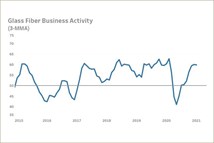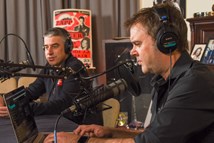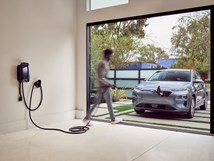L.A. Rated Most Congested City in the World, U.S. Is 4th Worst Country
The U.S. wastes an average of 42 hours per driver stuck in peak traffic jams per year—the most for any developed country in the world—and accounts for 11 of the 25 worst gridlocked cities worldwide, according to traffic data provider Inrix Inc.
The U.S. wastes an average of 42 hours per driver stuck in peak traffic jams per year—the most for any developed country in the world—and accounts for 11 of the 25 worst gridlocked cities worldwide, according to traffic data provider Inrix Inc.
The Inrix Global Traffic Scorecard analyzed and ranked the impact of traffic congestion in 1,064 cities in 38 countries worldwide last year. Kirkland, Wash.-based Inrix was spun off from Microsoft Corp. in 2005.
Thailand fared the worst in the study, with drivers spending an average of 61 hours per year in peak congestion last year, according to the study. The country is followed by Colombia and Indonesia, which tied for second at 47 hours each. The U.S. and Russia tied for fourth at 42 hours.
Los Angeles is the worst city measured, with drivers spending an average of 104 hours per year stuck in gridlock during peak time periods. The next-most-congested cities are Moscow (91 hours), New York (89 hours), San Francisco (83 hours) and Bogota, Colombia (80 hours). Atlanta and Miami also rank in the top 10, with times of 71 hours (8th) and 65 hours (10th), respectively.
For the first time, the Inrix Traffic Scorecard also calculated the direct and indirect costs of congestion. The report estimates the cost in the U.S. alone at $300 billion—or about $1,400 per driver. Germany was even worse with an average cost per driver of more than $1,900.
New York City is the most congested city in the U.S., costing $16.9 billion last year for an average of more than $2,500 per driver, according to the report. Direct costs are based on the value of fuel and time wasted. Indirect costs include higher prices passed onto consumers from freight and business fees incurred by company vehicles stuck idling in traffic.
Phoenix and Detroit tied for the lowest cost of congestion among the top 25 U.S. cities, at $1,060 per driver. They rank among the lowest in all three categories studied: commuting, business and leisure/other.
New York's Cross Bronx Expressway tops the Inrix list of worst traffic corridors, with the average driver on the 4.7-mile stretch wasting 86 hours per year in congestion. Three other New York corridors made the top 10.
In other findings, the report says:
- Stamford, Conn., has the highest overall congestion rate (peak and non-peak hours) in the U.S. at 14%. Tied for second at 13% are New York City, San Francisco, Los Angeles and Seattle.
- Boston drivers spend the highest percentage of their peak travel in congestion—with an average peak congestion rate of 23%.
- Commuters within San Francisco have the highest U.S. congestion rate on arterial and city streets during the peak commute hours (23%).
- Commuters In Austin, Tex., top the rating in terms of time spent stuck in traffic while trying to get into and out of the city (28%).
- Freight delivery and business-related travel are slowest within Chicago and Boston, with average speeds during the daytime of 4.9 mph.
The full report is available online here.
RELATED CONTENT
-
Jeeps Modified for Moab
On Easter morning in Moab, Utah, when the population of that exceedingly-hard-to-get-to town in one of the most beautiful settings on Earth has more than doubled, some people won’t be hunting for Easter eggs, but will be trying to get a good look at one of the vehicles six that Jeep has prepared for real-life, fast-feedback from the assembled at the annual Easter Jeep Safari.
-
Increasing Use of Structural Adhesives in Automotive
Can you glue a car together? Frank Billotto of DuPont Transportation & Industrial discusses the major role structural adhesives can play in vehicle assembly.
-
TRW Multi-Axis Acceleration Sensors Developed
Admittedly, this appears to be nothing more than a plastic molded part with an inserted bolt-shaped metal component.








